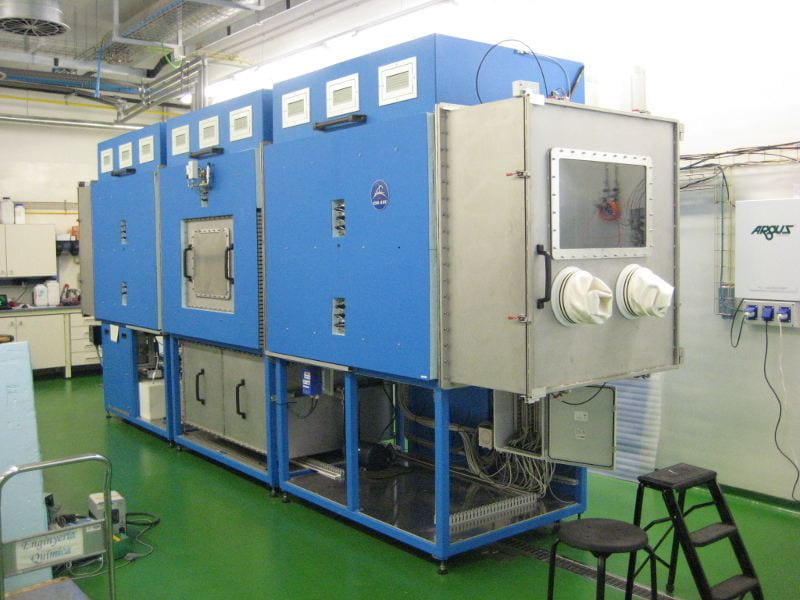The facility fosters collaborative interactions among European, American and Canadian specialists and serves to benefit research and education programs in both Europe and North America. Combining the expertise in higher plant studies at Guelph with the micro-ecological expertise of the MELiSSA group will achieve a broader and unique focus of life support research, which will complement, but not duplicate, the NASA program in Advanced Life Support (ALS). A strong attraction to us at the University of Guelph is the potential for education programs in collaboration with European universities (eg. the International Space University). This education and training component is equally relevant to the relationship between the research programs and our interaction with industries.
Higher Plant Chamber – UAB
The HPC at the Universitat Autonoma de Barcelona (UAB) in Spain was completed in 2009. The chamber was constructed by Angstrom Engineering. Currently a single prototype, it was designed to integrate along with two more identical units into the UAB MELiSSA pilot plant. It is constructed of primarily 316 stainless steel, tempered safety glass, polypropylene, Teflon, and Viton thermoplastics. The small size of the pilot plant resulted in a unique solution to provide a total of 15 square metres of growing area. Rather than a traditional walk in growth room configuration, the prototype HPC contains a 1 x 5 m long growing area with air-lock access on both ends. This allows for staggered harvesting while maintaining integrity of the MELiSSA loop. Seedlings are introduced on one end, and plants ready for harvest are removed from the other as part of a staggered planting interval. Seedling introduction and mature crop harvest can be performed with minimal aerial contamination of the main growing volume.

System Specifications
Dimensions
- Volume = 7.35 m3 (6 m x 1.11 m x 1.26 m) [8.61 m3 with airlocks]
- Plant Growing Area = 5 m2 (1 m x 5 m)
- Construction Materials used
- Stainless Steel 316 (walls, floor, valves, plumbing)
- Glass (roof)
- Teflon (tubing, gas expansion bladders)
- Polypropylene (tubing, valves)
- Heresite (oxidation barrier on fans, heat exchangers, motor parts)
- Viton (O-rings, solenoid seats, gaskets)
Analysers
- California Analytical Instruments CO2/O2 Analyser (model 600)
Lighting
- 6×600 Watt High Pressure Sodium + 3×400 Watt Metal Halide
- Light level: ~800 µmol m-2 second-1 PAR at mid canopy
Hydroponic System Sensors
- Electrical Conductivity
- pH
- Temperature
- Main tank and stock tank float level sensors
- Nutrient flow
Chamber Sensors
- Air Humidity sensors (3)
- Air Temperature sensors (3)
- LiCor Quantum Sensors (3)
Environment Control
- Temperature ( 15 to 30 C ) + 0.2 C
- CO2 Concentration ( ambient to 6000 ppm ) + 10 ppm
- O2 Concentration (ambient)
- Relative Humidity (50% to 95%) + 5%





